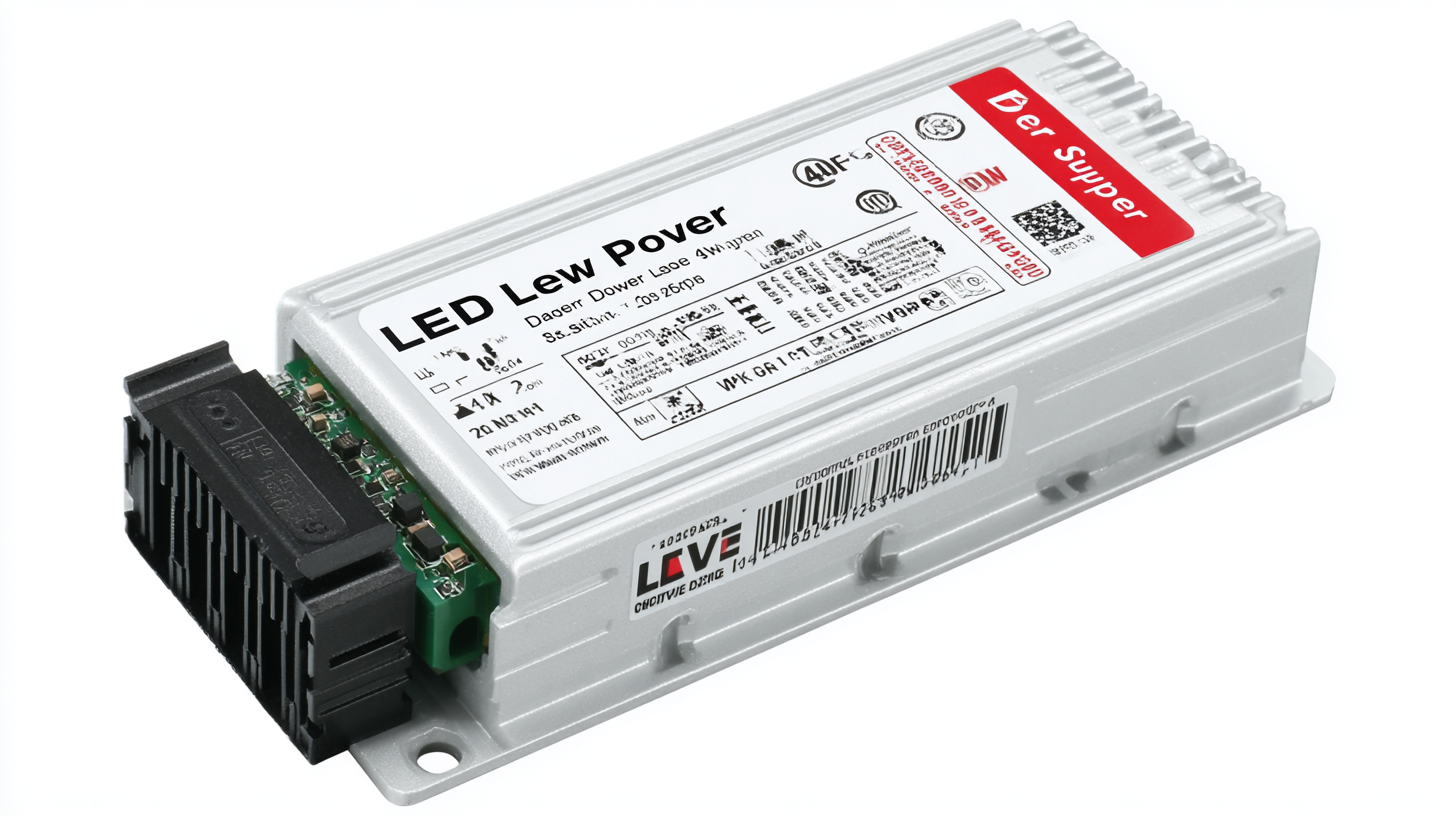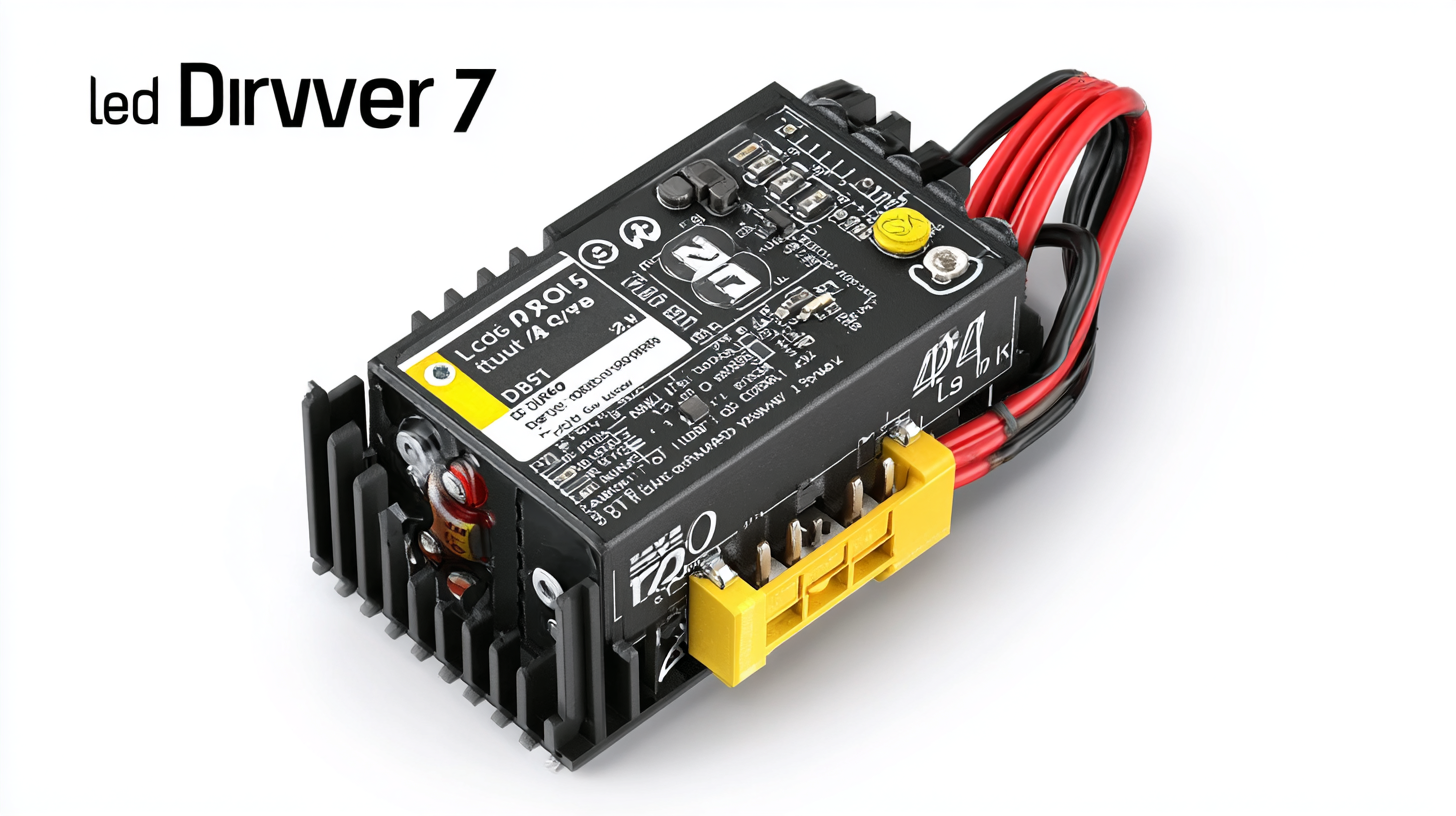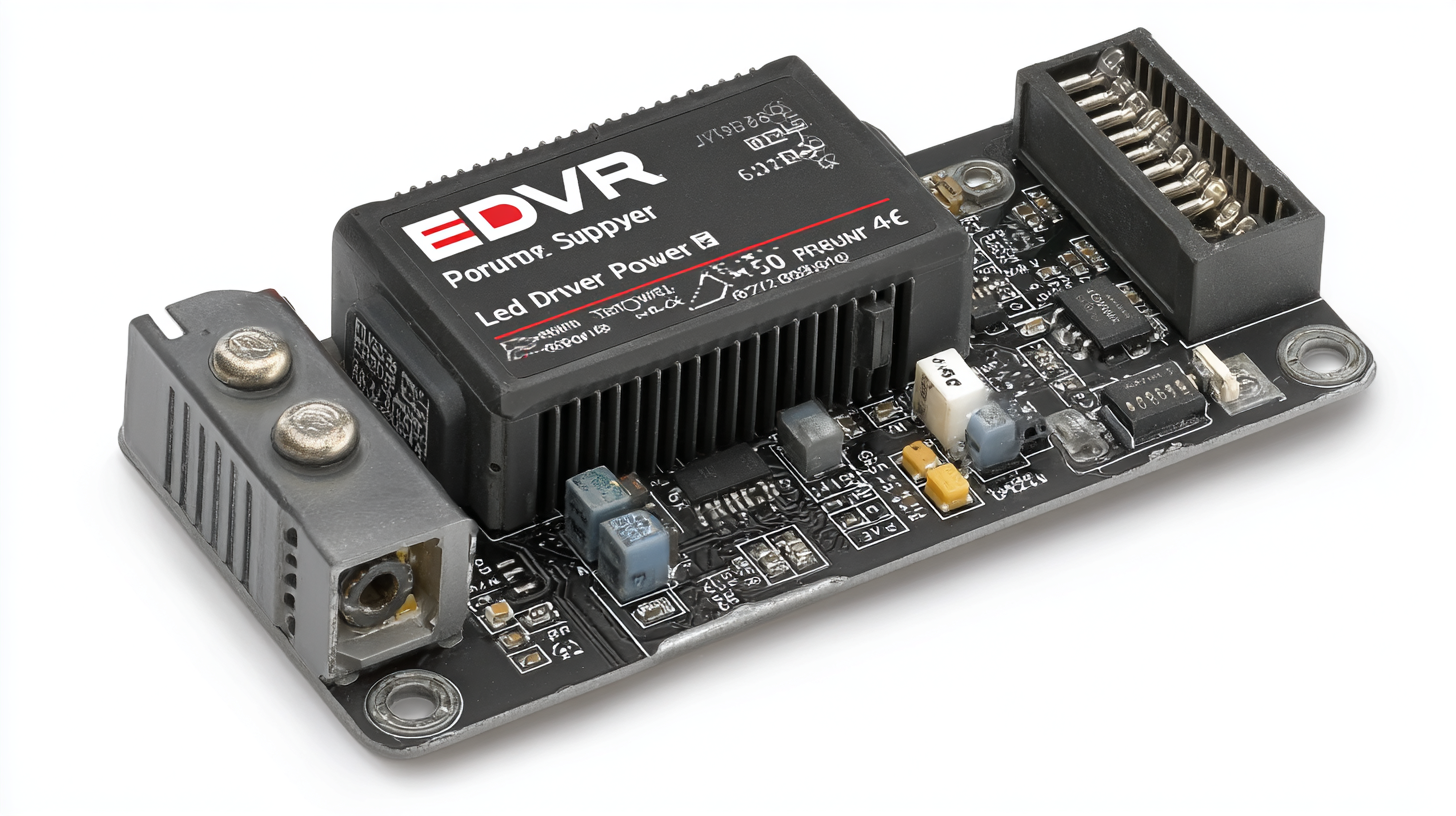
7 Expert Tips to Choose the Best Led Driver Power Supply for Your Project
In the rapidly evolving landscape of lighting technology, selecting the right Led Driver Power Supply has become crucial for efficiency and performance in various projects. According to research from MarketsandMarkets, the global LED driver market is projected to grow from $4.91 billion in 2020 to $10.20 billion by 2025, reflecting a significant shift towards energy-efficient solutions. As projects aim for sustainability and cost-effectiveness, understanding the nuances of Led Driver Power Supply options is essential. Factors such as compatibility with LED types, voltage requirements, and thermal management significantly impact the overall success and longevity of lighting systems.

This blog will explore seven expert tips that will guide you in choosing the best Led Driver Power Supply tailored to your specific project needs, ensuring both optimal performance and efficiency in your lighting designs.
Understanding LED Driver Power Supply Specifications
When choosing the best LED driver power supply for your project, understanding the specifications is crucial for ensuring optimal performance. LED drivers not only convert the AC voltage to the required DC output but also regulate the current to prevent fluctuations that can damage the LEDs. A well-designed LED driver can enhance the lifespan and reliability of your lighting solution.
One important specification to consider is the input power factor. A high-input power factor indicates that the driver is efficient in converting energy and minimizes energy losses. Look for drivers that implement advanced circuitry, such as a single-stage structure with coupled inductors, as these designs have shown promising results in maintaining a high power factor while ensuring a stable output current suitable for various applications, including indoor lighting and streetlights.
Additionally, pay attention to the ripple voltage and current specifications. Excessive ripple can lead to flickering and reduced LED performance. Therefore, selecting an LED driver with low output ripple is essential for providing a smooth and consistent light quality. Features like soft-switching and power factor correction can greatly enhance the driver's performance and lifespan, making them invaluable for any serious LED lighting project.
7 Expert Tips to Choose the Best Led Driver Power Supply for Your Project
| Specification | Description | Importance |
|---|---|---|
| Voltage Output | The voltage that the driver delivers to the LEDs. | Ensures compatibility with LED voltage requirements. |
| Current Output | The amount of current the driver can provide. | Crucial for LED brightness and longevity. |
| Dimming Capability | Ability to adjust the brightness of the LED lights. | Enhances energy efficiency and control over lighting. |
| Efficiency Rating | Percentage of input power converted to output power. | Affects energy consumption and cost savings. |
| Temperature Range | Operating temperature limits for the driver. | Ensures reliability in various environmental conditions. |
| Form Factor | Physical size and shape of the power supply. | Important for fitting in specific project spaces. |
| Safety Certifications | Standards that the driver meets for safe operation. | Critical for compliance and user safety. |
Key Considerations for Selecting the Right Power Supply for Your Needs
When selecting the right LED driver power supply for your project, it's crucial to consider several key factors to ensure optimal performance and longevity. First and foremost, assess the voltage and current requirements of your LED setup. Understanding the specifications of your LEDs will guide you in choosing a driver that not only matches the voltage but also can handle the maximum current to prevent any potential damage or inefficiency.
Another important aspect to consider is the type of LED driver—constant current or constant voltage. Constant current drivers are suitable for applications where the brightness needs to be consistent, while constant voltage drivers are ideal for setups that require varying levels of brightness. Additionally, think about the environment in which the driver will operate. If it’s exposed to moisture or extreme temperatures, opting for a driver with adequate protection ratings can prevent failures and extend the life of your lighting system. Evaluating these factors ensures that you select a power supply tailored to your project's specific needs, enhancing both functionality and reliability.
Power Supply Selection Criteria for LED Drivers
This chart displays the key considerations for selecting the best LED driver power supply for your project based on expert tips.
The Importance of Efficiency Ratings in LED Driver Power Supplies
When selecting an LED driver power supply for your project, understanding efficiency ratings is crucial. The average luminous efficacy of modern LED lamps stands at about 105 lm/W, which underscores the importance of choosing drivers that optimize this performance. An efficient LED driver not only maximizes light output but also plays a significant role in reducing overall electricity consumption, which is a pressing global concern today.

Navigating Compliance and Certification Requirements in the Industry
When selecting an LED driver power supply for your project, navigating compliance and certification requirements is essential to ensure both safety and performance. Different regions have specific standards, such as UL, CE, and RoHS, which dictate how electrical components should be manufactured and tested. Familiarizing yourself with these regulations not only helps in selecting a compliant product but also enhances the credibility and reliability of your project.

Furthermore, it's crucial to consider the certification of the components used in your LED driver design. Checking for certifications such as ISO 9001 or ISO 14001 ensures that the manufacturer adheres to high-quality and environmental management standards. This diligence can save time and resources in the long run, minimizing the risks of project delays due to compliance issues. As you compile your list of potential LED drivers, prioritize those that have the necessary certifications to guarantee that your project meets regulatory demands while achieving optimal performance.
Comparing Linear vs. Switching LED Drivers: Which Is Best for Your Project?
When selecting an LED driver power supply for your project, one of the most critical decisions revolves around choosing between linear and switching LED drivers. Linear drivers typically offer a simpler design with excellent current regulation, making them suitable for applications where low noise and minimal flicker are essential. They operate efficiently at low currents, which can be advantageous for small-scale projects that require a straightforward implementation.
On the other hand, switching LED drivers are increasingly favored for their ability to handle higher efficiency and greater power output. These drivers convert electrical power by rapidly switching it on and off, reducing energy losses during the conversion process. This makes them ideal for larger projects or applications requiring more robust performance. Additionally, switching drivers often come with a range of advanced features, including dimming capabilities and thermal protection, enhancing their versatility in various lighting scenarios. When making your choice, consider the specific demands of your project, such as size, complexity, and desired efficiency, to determine which driver will best suit your needs.
